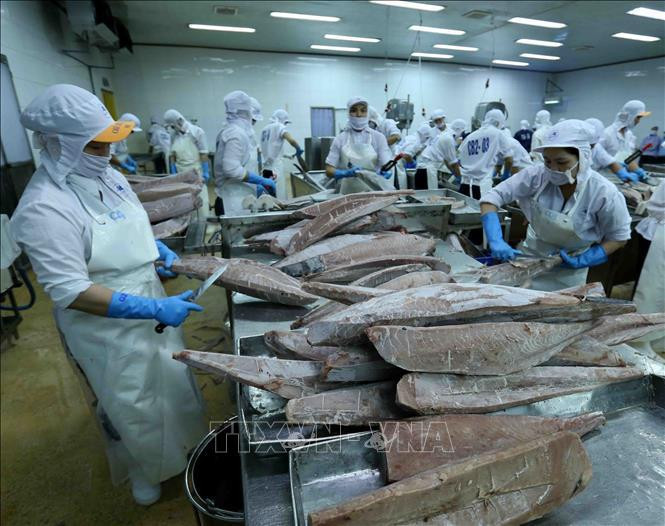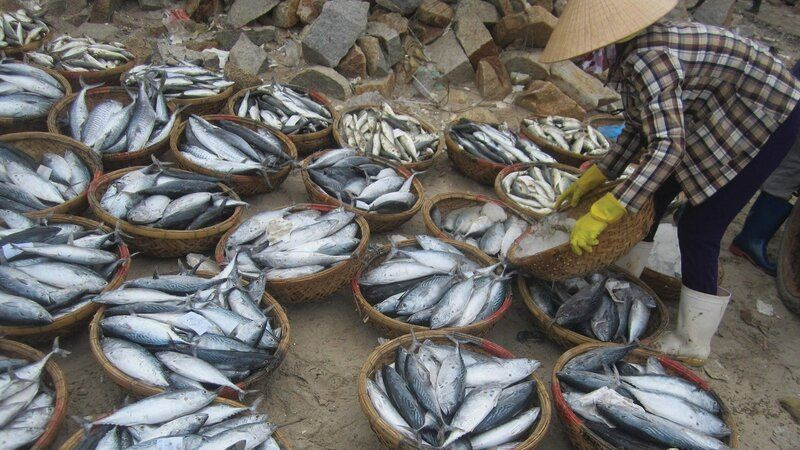Sharp increase in tuna exports
According to statistics from General Department of Vietnam Customs, by the end of July 2024, tuna export reached more than 550 million USD, up of 23% year on year.
Frozen tuna increased in value, reaching the highest level since the beginning of the year with more than 44 million USD, up 29% over the same period last year. The figure is likely to go up until the end of the year.
Meanwhile, canned tuna products decreased by 11%, estimated at nearly 20 million USD, as reported by Nguyen Thi Van Ha from the Vietnam Association of Seafood Exporters and Producers (VASEP).
According to the VASEP expert, tuna exports to major markets such as the US, Europe, and Israel have continued to increase in recent months, by 18%, 56%, and 50% respectively.
Notably, among the European markets, tuna exports to Italy and the Netherlands are soaring at a three-digit rate. At the same time, tuna exports to Russia have also risen sharply at a three-digit rate in the past two months, making Russia one of Vietnam's leading tuna export markets.
Currently, the demand in markets is increasing in preparation for the year-end holidays, promising an opportunity for Vietnamese tuna exporters.
VASEP General Secretary Truong Dinh Hoe assessed that Vietnam's tuna industry has many opportunities to grow this year, especially with global consumption demand on the rise.
The US and Europe will still be the two key markets of tuna exports. Potential markets such as Israel, Russia, and the Republic of Korea have many promising opportunities.
The implementation of free trade agreements such as the EU-Vietnam Free Trade Agreement (EVFTA) will create momentum for Vietnam's tuna exports as they not only help reduce taxes but also create more favourable conditions for exporters to penetrate into large markets.
Resolving raw material shortages
One of the biggest challenges currently facing the Vietnamese tuna industry is raw material shortages.
Director of Binh Dinh Seafood Joint Stock Company Cao Thi Kim Lan shared that more than 50% of exports are processed from imported tuna, since domestic sources is unstable and cannot meet the demand for export.
In April, the Government issued Decree No. 37/2024/ND-CP, which stipulates the minimum size to be exploited for aquatic species living in natural waters, including skipjack tuna.
Skipjack tuna is the main raw material for the processing and export of canned tuna. In 2023, canned tuna exports accounted for 40% of the country’s total tuna export turnover.
 |
| Workers process tuna for export at a factory in Binh Dinh province. (Photo: VNA) |
According to the decree, which took effect since May 19, skipjack tuna can only be exploited when reaching a minimum length of 500 mm. The regulation aims to ensure sustainable marine development, protect tuna resources, and avoid exploiting tuna at small sizes.
However, many fishermen and tuna processing and exporting enterprises expressed concerns about the regulations on the size of skipjack tuna because facts have shown that the number of skipjack tuna reaching a size of 500 mm or more accounts for only about 10 to 20% of the net catch.
The current annual output of skipjack tuna in our country is about 60,000 tons, much lower than the permitted output of 200,000 tons.
Exporters believe that the newly-promulgated regulations on skipjack tuna size may lead to insufficient supply of raw materials for processing and export.
Given the situation, the Vietnam Tuna Association suggested that an adjustment to the permitted exploitation size for female and male skipjack tuna should be considered, at 380mm and 387mm respectively, because most skipjack tuna of this size have grown and reached sexual maturity.
In addition, skipjack tuna is a highly migratory fish with large reserves, so countries and fisheries management organisations often apply exploitation quotas rather than exploitation size of the fishes.
VASEP leaders believe that if the raw material shortages are resolved, tuna exports will be extended and regain the notable milestone in 2022 when exports of the fish topped 1 billion USD. The Vietnamese tuna industry can grow further if greater efforts are made to overcome internal challenges and resolve difficulties, with support from the Government.
















